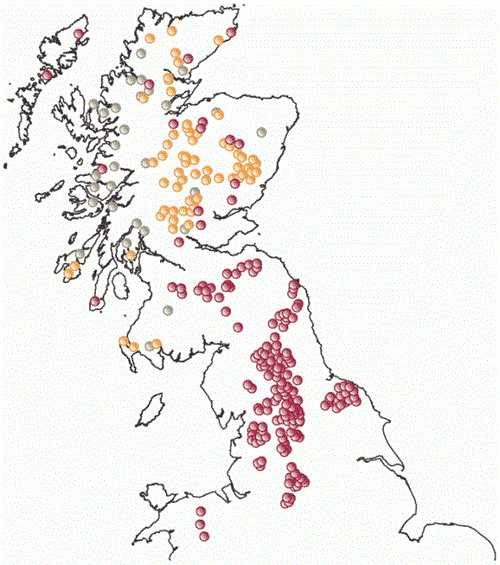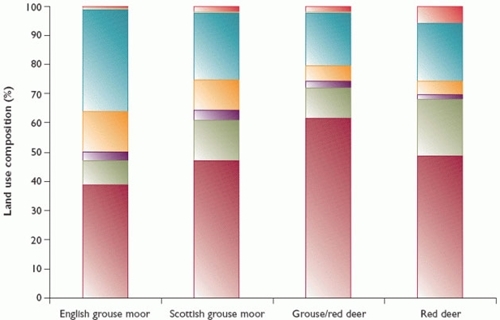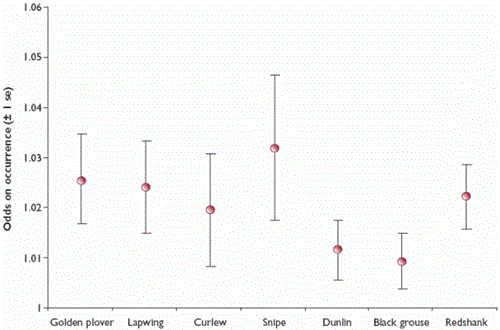Key findings
-
A high proportion of grouse moors are SSSIs, showing their environmental quality.
-
Management for red grouse increases the chances of breeding waders and black grouse being present.
Since 1999, the Game Conservancy Trust, in collaboration with the National Gamekeepers' Organisation (NGO), the Moorland Gamekeepers' Association (MGA) and the Scottish Gamekeepers' Association (SGA), has collated a survey of their gamekeeper, stalker and ghillie members. This work has been funded by the Countryside Alliance, the NGO and many anonymous donors. The purpose of our survey was to document management carried out for game management.
Our survey now covers 19,780 square kilometres (4.9 million acres), and enables us to look at differences in habitat management between groups of estates based on either location or quarry species, and sets this habitat management into its biological context. This article covers management carried out on moorland estates, focusing on moorland management.
We analysed information from 270 estates covering over 11,750 square kilometres of the British uplands, dividing them into groups based on the main quarry species: red grouse only; red grouse and red deer; and red deer only. The location of the estates within the British uplands determines, through habitat and species availability, the main quarry species. Estates managed solely for red grouse were mainly in southern Scotland, England and Wales. Estates managing both red grouse and red deer were mainly in north-eastern Scotland, with those managed solely for red deer in north-western Scotland (see Figure 1).
Figure 1: Distribution of different sorts of shooting estates within the uplands of the UK. Symbols indicate estates that have returned a survey form

Location leads to differences in the estates' size and their habitat. Red grouse estates in England were smaller than in Scotland by an average of 300 hectares. In Scotland, grouse moors were roughly half the size (3,300 hectares) of the other two types of estate (7,000 hectares).
The proportion of the area of moorland on English red grouse estates was also significantly less than in Scotland (39% compared with 47%), with grassland (a combination of improved and semi-natural grassland) making up about 49% of the area compared with 33% in Scotland (see Figure 2). Scottish red grouse estates and red deer estates had less moorland than the estates managed for both (48% versus 62%), with red grouse estates having more of their area made up of grassland (33%) than did red grouse and red deer estates (27%). Estates managed solely for red deer had a greater proportion of their area covered by woodland (19%) than did the other estates (red grouse - 14%; red grouse and red deer - 10%). Red grouse estates had labour inputs twice as high per unit area than other land uses, were more likely to undertake muirburn and other heather management practices, and when they did manage heather, they managed a larger proportion of their estate.
Figure 2: Composition of land use on four types of upland shooting estate

One measure of environmental quality is the amount of land designated as Sites of Special Scientific Interest (SSSI). On average, SSSIs make up 16% of the upland area of Britain, and the shooting estates in our survey covered 15%. Shooting estates accounted for 29% of this upland SSSI area compared with an expected 16% if it were randomly distributed. We then compared the breeding distributions of upland waders and black grouse, as published in the 1989-93 Atlas of Breeding Birds (British Trust for Ornithology), with areas of moorland management. For each 10x10 kilometre square in the uplands, the Atlas specifies presence or absence of breeding black grouse, dunlin, curlew, golden plover, lapwing, redshank and snipe. By overlaying estate maps, we quantified the percentage of managed moorland (where heather was burnt and predators controlled).
We found positive associations between presence/absence and percentage management for all these species (see Figure 3). Management for red grouse led to significantly improved chances of having breeding waders and black grouse on the moor. There is little doubt that moorland management has benefits that extend far beyond red grouse.
Figure 3: Likelihood of the occurrence of breeding birds on moorland managed for grouse moors. Figures above 1.0 indicate higher likelihood of presence
